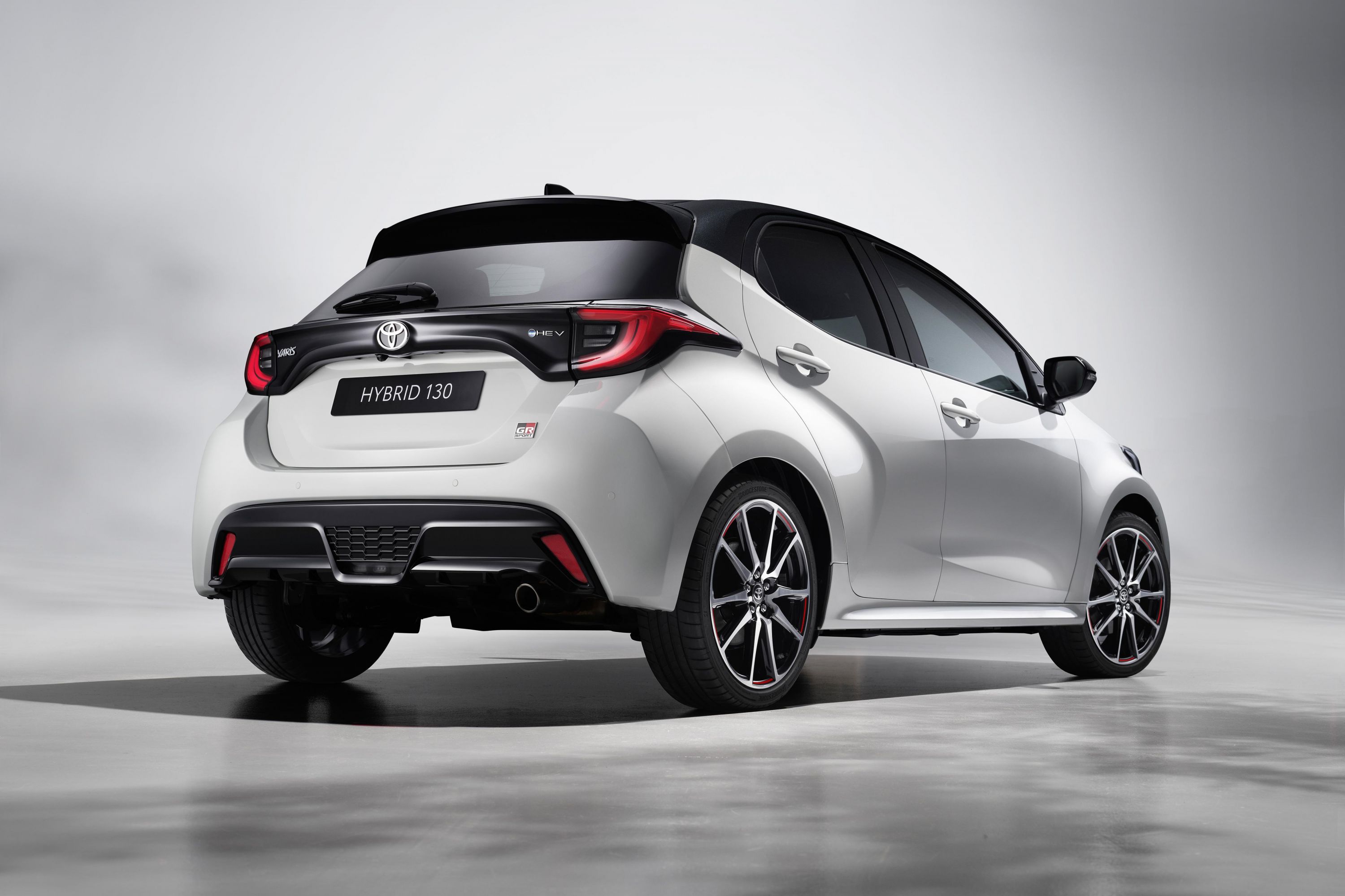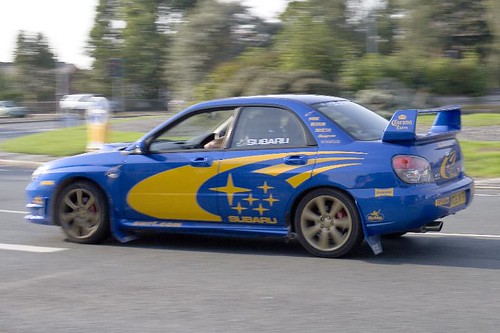
The age-old question in automotive circles often revolves around whether it’s the driver or the machine that’s truly responsible for incidents on the road. While personal judgment is undoubtedly a critical factor, compelling data suggests that the very vehicle model you choose might subtly, or perhaps not so subtly, be influencing your propensity for speed. We’re about to embark on an unparalleled exploration, meticulously peeling back the layers to reveal the specific car models that consistently find themselves on the wrong side of the law across the U.S. in the realm of speeding infractions.
This isn’t merely about the exotic allure of flashy sports cars; our comprehensive analysis, drawing from robust data sources like Insurify and other authoritative studies, uncovers a surprising array of vehicles. From high-performance sedans engineered for track-day prowess to agile compacts cherished for their ‘fun-to-drive’ characteristics, these vehicles are disproportionately cited for speeding. These aren’t just isolated anecdotes; rather, they represent clear statistical patterns, indicating a profound and undeniable connection between a car’s intrinsic characteristics and its owner’s inclination to push the limits.
As seasoned automotive journalists, deeply ingrained in the culture of performance and driving dynamics, we intimately understand the intoxicating allure of raw power and exceptional handling. Yet, the cost of indulging that urge can extend far beyond the fleeting thrill, encompassing everything from hefty fines and points on your license to substantial, long-term increases in insurance premiums. So, buckle up and prepare for a fascinating, albeit cautionary, ride as we meticulously detail the first half of the models earning a distinct reputation for attracting speeding tickets, dissecting what makes them so inherently tempting and the practical implications for their unsuspecting owners.
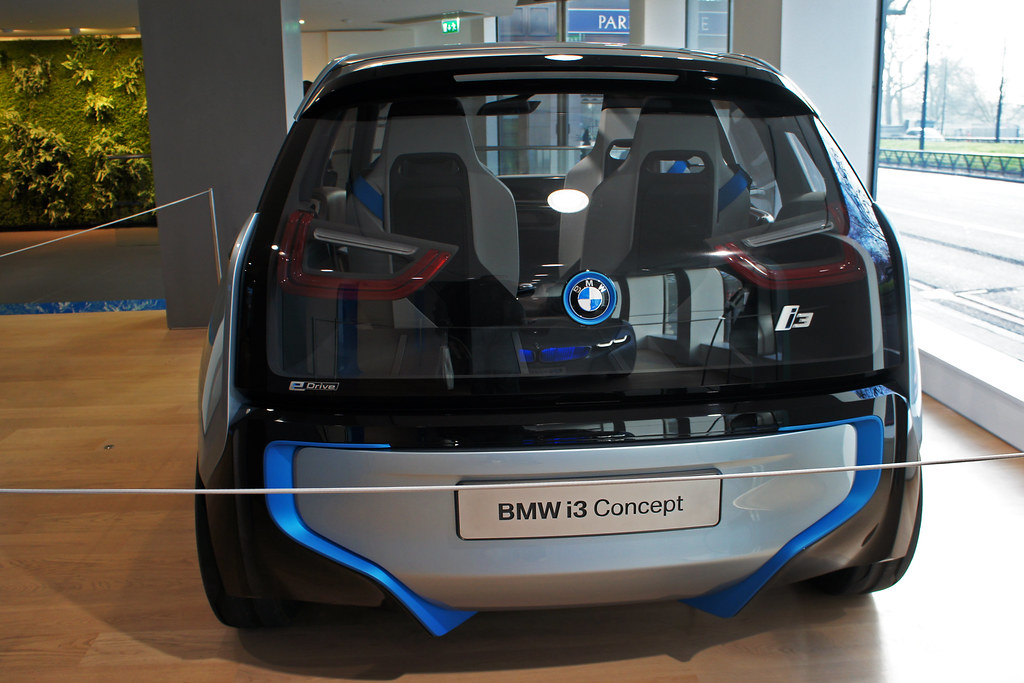
1. **BMW i3**Perhaps one of the most surprising entries on any list of speeding ticket magnets, the BMW i3 stands out. This compact, all-electric or plug-in hybrid vehicle might not immediately conjure images of high-speed chases, yet Insurify data reveals it to be the most ticket-prone car among those analyzed, with a staggering 17.6 percent of its drivers receiving speeding citations. This figure positions it at the apex of offenders, underscoring a fascinating paradox in the automotive landscape.
The BMW i3, with its distinctive design and focus on urban mobility, offers a different kind of performance. Its electric powertrain delivers instant torque and brisk acceleration, particularly in city driving scenarios where its nimble handling shines. This combination of immediate power delivery and agile dynamics can, perhaps unintentionally, encourage drivers to test its limits, even within seemingly moderate speed zones.
Despite its environmentally conscious positioning and practical dimensions, the i3 embodies a core BMW trait: the ‘ultimate driving machine’ philosophy, albeit in an electric package. This intrinsic characteristic, coupled with its relatively quiet operation, might lead drivers to underestimate the speeds they are achieving. It blurs the lines between a practical commuter and a surprisingly spirited performer, tempting owners to enjoy its zest in everyday driving.
For owners, the high incidence of speeding tickets associated with the BMW i3 can translate directly into significantly higher insurance premiums. Its unexpected position as a top offender highlights that the perception of a car model doesn’t always align with the real-world driving behaviors it can inspire. It’s a compelling example of how a vehicle’s inherent dynamics, rather than just its top-end speed, can contribute to its ticket-prone reputation.
Car Model Information: 2016 BMW i3 Range Extender
Name: BMW i3
Manufacturer: BMW
ModelCode: I01
Production: September 2013 – August 2022 (250,000 units)
Assembly: Leipzig
Successor: BMW iX,BMW iX1,BMW i4
Class: Supermini
BodyStyle: hatchback
Doors: Suicide doors
Layout: Rear-motor, rear-wheel-drive
Chassis: Carbon-fiber,Monocoque
Motor: BMW eDrive synchronous permanent magnet motor 125 kW
137 kW
Battery: kWh
ElectricRange: ampere hour,Convert,United States Environmental Protection Agency,Range extender (vehicle)
Engine: Straight-twin engine,range extender,9 L
Abbr: on
Transmission: Single speed with fixed ratio
Drivetrain: Series hybrid,plug-in hybrid,Range extender
Charging: Combo Coupler
Wheelbase: 2570 mm
Length: 3999 mm
Width: 1775 mm
Height: 1578 mm
Weight: 1195 kg
Sp: uk
Designer: Richard Kim (car designer)
ModelYears: 2014–2021 (North America)
Categories: All articles containing potentially dated statements, All articles with dead external links, Articles containing potentially dated statements from December 2019, Articles containing potentially dated statements from December 2021, Articles containing potentially dated statements from February 2014
Summary: The BMW i3 is an electric car that was manufactured by German marque BMW from 2013 to 2022. The i3 was BMW’s first mass-produced zero emissions vehicle and was launched as part of BMW’s electric vehicle BMW i sub-brand. It is a B-segment, high-roof hatchback with an electric powertrain. It uses rear-wheel drive via a single-speed transmission and an underfloor lithium-ion battery pack with an optional range-extending petrol engine.
Styled by Richard Kim, the i3 is a five-door with a passenger module of high strength, ultra-lightweight carbon fibre reinforced polymer adhered to an aluminium chassis, battery, drive system and powertrain. The body features two clamshell rear-hinged rear doors.
The i3 debuted as a concept at the 2011 International Motor Show Germany, and production began in September 2013 in Leipzig.
It ranked third amongst electric cars sold worldwide from 2014 to 2016. Its global sales totaled 250,000 units by the end of 2022. Germany was its biggest market with over 47,500 units delivered through December 2021, followed by the U.S. with over 45,000.
The i3 won two World Car of the Year Awards, selected as 2014 World Green Car of the Year and as 2014 World Car Design of the Year. The i3 received an iF Product Design Gold Award, and won UK Car of the Year 2014 and Best Supermini of 2014 in the first UK Car of the Year Awards.
Get more information about: BMW i3
Buying a high-performing used car >>>
Brand: BMW Model: i3
Price: $14,998 Mileage: 49,999 mi.
Read more about: Avoid These 16 Cars: They Become Money Pits After 100,000 Miles
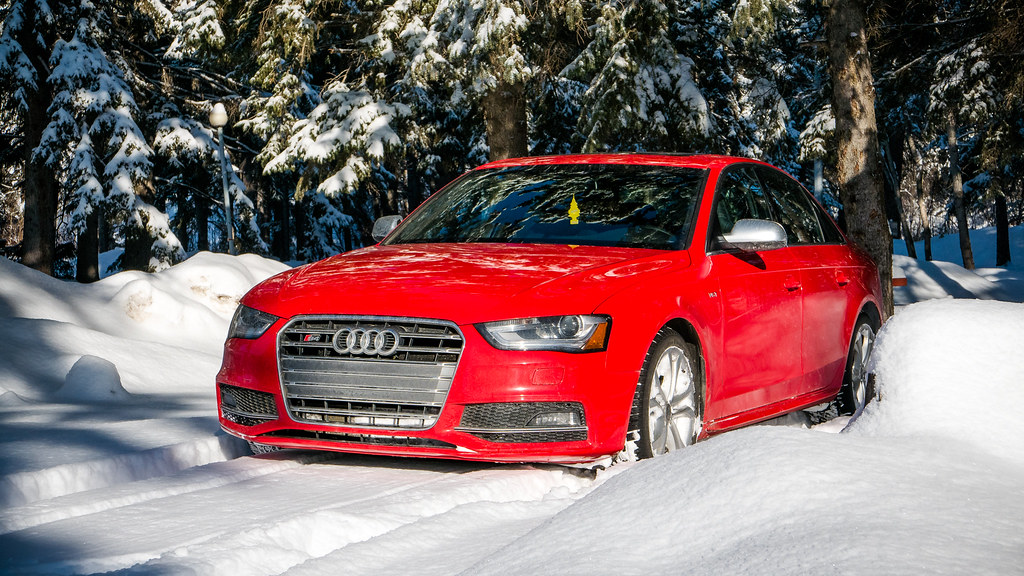
2. **Audi S4**Stepping into a more traditional realm of performance, the Audi S4 is precisely the kind of sophisticated, high-performance sedan one might expect to see frequently cited for speeding. This German powerhouse combines understated luxury with formidable capability, making it a natural choice for drivers who appreciate speed and precision. Its presence on the list, with 14.6 percent of its owners receiving a ticket, is less of a shock and more of a confirmation of its appeal to speed enthusiasts.
The S4 is engineered for exhilarating performance. Equipped with a potent turbocharged engine, it boasts an impressive acceleration figure, capable of rocketing from 0 to 60 mph in a mere 4.2 seconds. This kind of raw, accessible power, combined with Audi’s renowned Quattro all-wheel-drive system, provides drivers with immense confidence and control, even when pushing the car to its limits.
Its refined cabin and elegant design belie the beast within, offering a deceptive blend of comfort and velocity. Drivers often find themselves effortlessly reaching higher speeds, thanks to the smooth power delivery and the car’s remarkable stability at speed. This seamless performance can make it all too easy to inadvertently exceed posted limits, particularly on open stretches of road where the S4 truly comes alive.
The temptation to exploit the Audi S4’s exceptional performance is strong, and the data clearly reflects this driver inclination. While it offers a luxurious and engaging driving experience, the financial consequences of its ticket-prone nature, including increased insurance costs, are a tangible downside for those who succumb to its powerful persuasion. It remains a prime example of a performance-oriented vehicle designed to be driven spiritedly.
Car Model Information: 2012 Audi S4 Prestige
Name: Audi S4
Caption: Audi S4 (B9) sedan (front view, United States)
Manufacturer: Audi AG
Production: 1991–1994,1997–2025
Class: Compact executive car
Layout: F4 layout
Related: Audi A4,Audi RS 4
Sp: uk
Categories: 2000s cars, 2010s cars, All-wheel-drive vehicles, All articles with unsourced statements, All articles with vague or ambiguous time
Summary: The Audi S4 is the high performance variant of Audi’s compact executive car A4. The original Audi S4, built from 1991 until 1994, was a performance-oriented version of Audi’s 100 saloon/sedan. All subsequent S4s since 1997 have been based on the Audi A4; and as the A4 has evolved from one generation to the next, so has the S4.
Like its regular A4 counterpart, all S4 variants have had longitudinally oriented, front-mounted engines. All versions of the S4 have their transmission mounted immediately at the rear of the engine in a longitudinal orientation, in the form of a transaxle, and like all Audi “S” cars, are only available as standard with Audi’s quattro all-wheel drive (AWD) system, using a Torsen-based centre differential system. A more powerful internal combustion engine, larger upgraded brakes, firmer suspension, larger wheels, and distinctive sheetmetal, styling clues and badging have always been amongst the many upgrades the S4 receives over its mainstream 100 and A4 siblings. In markets where the even higher-performance Audi RS 4 is not offered, the S4 is the top-of-the-line trim of the A4 family.
A single turbocharged 2.2-litre inline five-cylinder powered the original C4 version, and a 2.7-litre twin turbocharged V6 engine was found in the B5 generation. The B6 and B7 versions shared a common 4.2-litre V8 engine, the first time that a V8 engine was placed in a compact executive car, placing it in direct competition with the BMW M3 (3.2 L inline 6) and Mercedes-Benz C32 AMG (3.2-litre supercharged V6). The B8 generation uses a supercharged 3.0-litre V6 TFSI engine and competed with the BMW 335i, BMW 335i/340i xDrive, and Mercedes-Benz C350. The current B9 generation is powered by a turbocharged 3.0-litre V6 TFSI engine, with rivals including the BMW M340i xDrive and Mercedes-Benz C450 AMG/Mercedes-AMG C43 4MATIC.
All versions of the S4 have been manufactured at Audi’s plant in Ingolstadt, Germany; they are, or have been available as a four-door five-seat saloon and a five-door five-seat Avant (Audi’s name for an estate car/station wagon) body styles since the model’s inception in 1991. A two-door four-seat Cabriolet (convertible) S4 variant was introduced as part of the B6 and B7 generation A4 lineups. The B8 Cabriolet has now been built off the A5 coupe body style and the “S” variant is marketed under the Audi S5 nameplate.
Get more information about: Audi S4
Buying a high-performing used car >>>
Brand: Audi Model: S4
Price: $19,995 Mileage: 86,548 mi.
Read more about: Unpacking the Paychecks: Who Are TV’s Top 9 Earners in 2025 (And What Drives Their Staggering Salaries)?
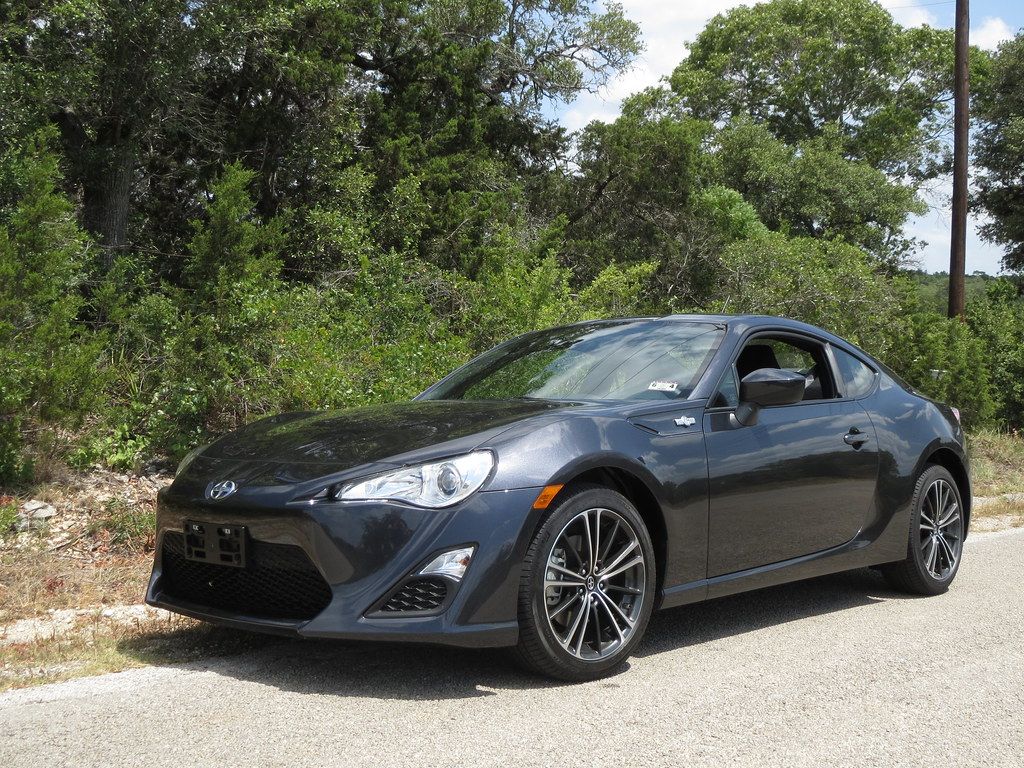
3. **Scion FR-S**The now-defunct Scion FR-S carved out a unique niche in the sports car market, celebrated not for prodigious power, but for its purist approach to driving dynamics. This lightweight, rear-wheel-drive coupe was designed with driver engagement at its core, appealing to enthusiasts who prioritize nimble handling and balanced chassis over brute force. Its appearance with 13.7 percent of drivers receiving tickets underscores that the joy of driving, even at moderate speeds, can often lead to exceeding limits.
The FR-S, and its Subaru BRZ sibling, were lauded for their exceptional handling characteristics. Its low center of gravity, precise steering, and communicative chassis encouraged spirited driving, even at speeds well within legal limits. However, this inherent dynamism often tempted drivers to explore its capabilities on public roads, where its agility could be easily translated into excessive speed.
While its engine offered modest horsepower compared to some muscle cars, the FR-S’s responsiveness and the engaging mechanical feel of its manual transmission created an immersive driving experience. This connection between car and driver fostered a sense of control and enjoyment that could inadvertently lead to a heavier right foot, particularly on winding roads or during quick bursts of acceleration.
The Scion FR-S was, in many ways, a testament to the idea that a truly fun-to-drive car doesn’t necessarily need overwhelming power. Yet, this very ‘fun-to-drive’ quality made it a magnet for drivers who sought to extract every ounce of its performance, sometimes at the expense of staying within the confines of speed regulations. It serves as a compelling case study on how driver demographics and vehicle design converge to influence ticket rates.
Car Model Information: 2013 Scion FR-S 10 Series
Name: Toyota 86 / Subaru BRZ
Caption: 2022 Toyota GR86 Premium (ZN8)
Manufacturer: Toyota
Aka: unbulleted list
Production: January 2012 – present
ModelYears: 2013–present
Assembly: Ōta, Gunma
Class: Sports car
BodyStyle: fastback,coupé
Layout: Front-engine, rear-wheel-drive
Sp: uk
Categories: 2+2 coupés, 2020s cars, All Wikipedia articles written in British English, All articles with dead external links, All articles with unsourced statements
Summary: The Toyota 86 and the Subaru BRZ are 2+2 sports cars jointly developed by Toyota and Subaru, manufactured at Subaru’s Gunma assembly plant.
The 2+2 fastback coupé has a naturally aspirated boxer engine, front-engined, rear-wheel-drive configuration, 53/47 front/rear weight balance and low centre of gravity; it was inspired by Toyota’s earlier AE86, a small, light, front-engine/rear-drive Corolla variant widely popular for Showroom Stock, Group A, Group N, Rally, Club and drift racing.
For the first-generation model, Toyota marketed the sports car as the 86 in Asia, Australia, North America (from August 2016), South Africa, and South America; as the Toyota GT86 in Europe; as the 86 and GT86 in New Zealand; as the Toyota FT86 in Brunei, Nicaragua and Jamaica and as the Scion FR-S (2012–2016) in the United States and Canada.
The second-generation model is marketed by Toyota as the GR86 as part of the Gazoo Racing family.
Get more information about: Toyota 86
Buying a high-performing used car >>>
Brand: Scion Model: FR-S
Price: $10,500 Mileage: 121,721 mi.
Read more about: For Snow Belt Residents: A Deep Dive into the 10 Worst Winter-Ready Vehicles on the Market Today
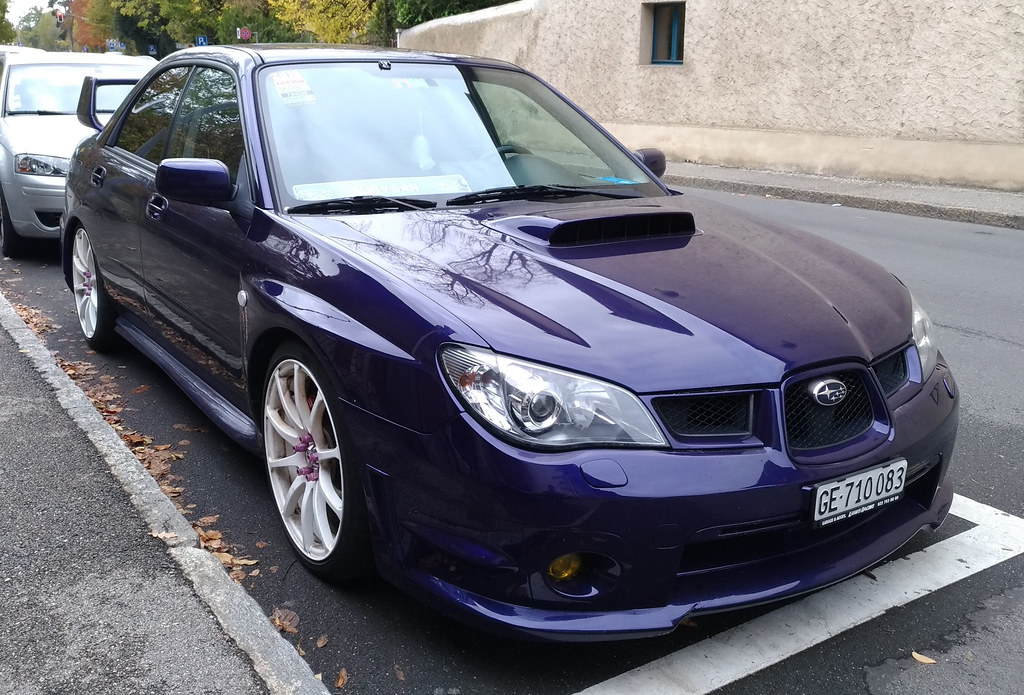
4. **Subaru WRX**Few cars are as synonymous with aggressive driving and rally-bred performance as the Subaru WRX. This legendary model, which boasts a remarkable 13.6 percent of its drivers with speeding tickets, is a perennial favorite among enthusiasts who crave turbocharged power, tenacious all-wheel-drive grip, and a direct connection to motorsports heritage. Its consistently high position on lists of ticketed vehicles is hardly a surprise, given its design brief.
The WRX was “inspired by a rally car,” a direct lineage that is evident in its robust suspension, potent engine, and exceptional handling characteristics in varied conditions. Designed for speed and spirited driving, its turbocharged boxer engine delivers an exhilarating surge of power that can quickly propel the car past legal speed limits, even with just a light touch of the accelerator pedal. Insurify data also notes that the Subaru WRX “tops the charts with 49% more speeding tickets than average.”
Owners of the WRX often belong to a demographic that appreciates performance and isn’t afraid to push the limits. The car’s aggressive styling, functional hood scoop, and stiff chassis communicate a clear intent: this vehicle is built for enthusiastic driving. This inherent character often encourages drivers to engage with its performance capabilities, leading to more frequent encounters with law enforcement.
Consequently, the Subaru WRX is not just “another high-ticket offender” but a definitive statement about the interplay between vehicle design, target demographic, and driving behavior. For those behind the wheel, the thrill of its performance comes with the increased statistical likelihood of facing the financial and legal repercussions of a speeding ticket, underscoring the importance of responsible driving, even in a car built for excitement.
Car Model Information: 2023 Subaru WRX Base
Name: Subaru WRX
Caption: 2022 Subaru WRX GT
Aka: Subaru Impreza WRX (1992–2014)
Production: 1992–2014 (Impreza-based models),2015–present (standalone models)
Assembly: Ōta, Gunma
Layout: Front-engine, four-wheel-drive layout
Manufacturer: Subaru
Related: Subaru Levorg,Subaru WRX STI
Class: Sport compact
BodyStyle: Sedan (automobile)
Categories: 2020s cars, All-wheel-drive vehicles, All Wikipedia articles written in British English, All articles with unsourced statements, Articles with short description
Summary: The Subaru WRX is an all-wheel drive sport compact car manufactured by the Japanese automaker Subaru, originally based on the Impreza created for the World Rally Championship in 1992. Subaru claimed the name WRX stands for “World Rally eXperimental”. Starting with the 2015 models, the WRX lineup has been split from the Impreza, with a different body style that is not offered as an optional hatchback/wagon, being introduced as the separate Levorg model.
Get more information about: Subaru WRX
Buying a high-performing used car >>>
Brand: Subaru Model: WRX
Price: $27,961 Mileage: 27,000 mi.
Read more about: 12 Legendary Automotive Rivalries That Revolutionized the Roads and Fueled Innovation
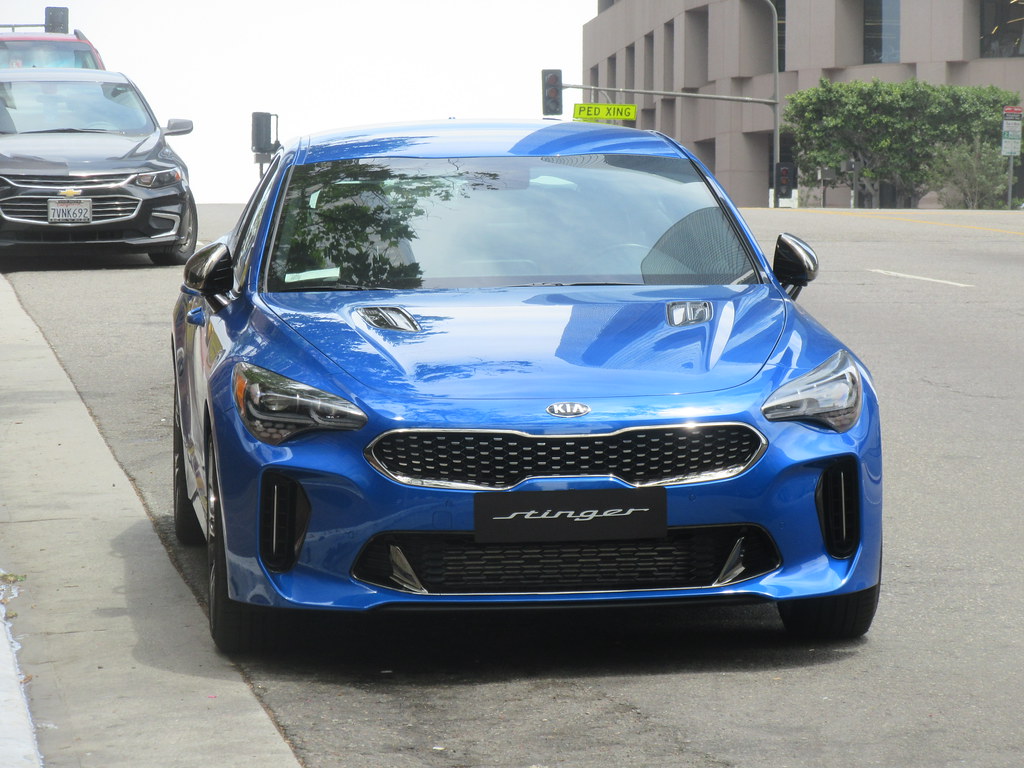
5. **Kia Stinger**Breaking the mold of its brand’s traditional image, the Kia Stinger emerged as a formidable challenger in the performance sedan segment, quickly garnering praise for its sleek design, luxurious interior, and most importantly, its surprising power and dynamic driving characteristics. With 13.4 percent of its drivers having speeding tickets, the Stinger clearly demonstrates that its blend of performance and style is irresistible to those who enjoy a spirited drive.
The Stinger was boldly “designed for speed,” featuring powerful engine options, including a potent twin-turbo V6 that delivers exhilarating acceleration and impressive top-end performance. Its rear-wheel-drive platform and sport-tuned suspension provide a driving experience that rivals established European sports sedans, encouraging drivers to explore its capabilities on open roads and winding stretches.
This vehicle represents a significant shift for Kia, projecting an image of dynamic performance and sophisticated design that attracts a new segment of buyers. These drivers are often drawn to the Stinger’s compelling value proposition—offering high-end performance and features without the premium price tag. The car’s engaging driving dynamics make it easy for drivers to become absorbed in the experience and inadvertently exceed speed limits.
Statistically, the Kia Stinger is cited for “43% more speeding tickets than the average,” further solidifying its reputation as a vehicle that tempts its owners to drive aggressively. While it delivers on its promise of thrilling performance and stylish appeal, owners must remain acutely aware of its potential to attract attention from law enforcement and the subsequent impact on their driving record and insurance rates.
Read more about: Bypass These 6 Compacts: They Become Headaches for Any Mechanic After You Hit Triple Digits
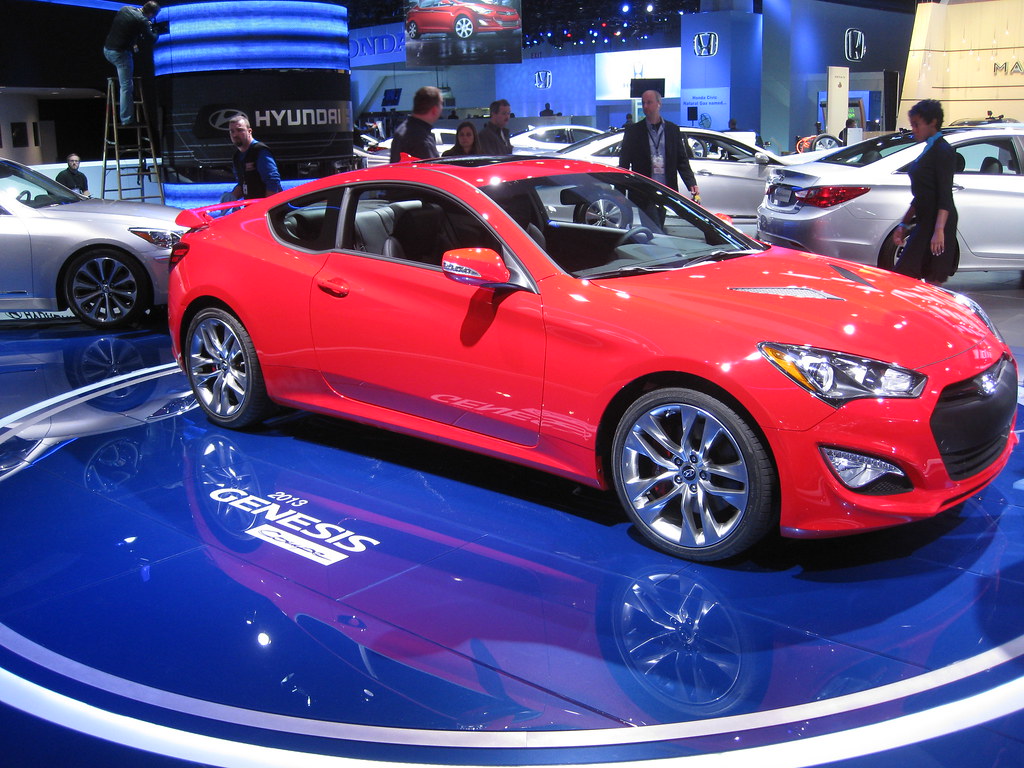
6. **Hyundai Genesis Coupe**Another compelling entry from a brand renowned for value and quality, the Hyundai Genesis Coupe established itself as a legitimate contender in the affordable sports coupe market. Its aggressive styling, available powerful engines, and enthusiast-oriented chassis dynamics made it a popular choice for drivers seeking an engaging experience without breaking the bank. Insurify data shows 13.4 percent of Genesis Coupe drivers receive speeding citations.
The Genesis Coupe was engineered to offer a genuine sports car feel, featuring a rear-wheel-drive layout and engine options that provided robust power and torque. This combination, particularly with the more potent V6 engine, delivered spirited acceleration and a satisfying exhaust note, encouraging drivers to push the car’s limits. The car’s dynamic handling characteristics made it a joy to drive aggressively on twisty roads.
Beyond just speeding, the Genesis Coupe also appears prominently in reports of reckless driving. It leads the charge with 67 reckless driving infractions per 10,000 vehicles in one study, indicating that its drivers might exhibit a broader range of risky behaviors behind the wheel. This suggests that the vehicle’s appeal extends to those who not only enjoy speed but also more assertive driving styles.
The car’s sporty design, coupled with its performance capabilities, undeniably attracts drivers who are more prone to taking risks. This correlation between vehicle model and driver behavior is a critical factor in understanding why the Genesis Coupe so frequently appears on lists of vehicles associated with violations. Owners are often drawn to its ability to make a statement and deliver an exhilarating driving experience, which often translates into higher rates of tickets.
Car Model Information: 2023 Subaru Forester Limited
Name: Hyundai Genesis Coupe
ModelCode: BK
Manufacturer: Hyundai Motor Company
Aka: Hyundai Rohens Coupe (China)
Related: Hyundai Genesis#BH
Production: 2008–2016
ModelYears: unbulleted list
Assembly: Ulsan
Class: Sports car
BodyStyle: coupé
Layout: Front-engine, rear-wheel-drive layout
Platform: Hyundai-Kia M platforms
Engine: unbulleted list
Transmission: unbulleted list
Wheelbase: 2820 mm
Abbr: on (facelift)
Length: 4630 mm
Width: 1865 mm
Height: 1380 mm
Weight: convert
Designer: Eric Stoddard
Categories: 2010s cars, All articles with unsourced statements, Articles with short description, Articles with unsourced statements from July 2017, Cars discontinued in 2016
Summary: The Hyundai Genesis Coupe is a rear-wheel drive sports coupe from Hyundai Motor Company, first released on October 13, 2008, for the Korean market. It is Hyundai’s first rear-wheel drive sports coupe, and shares its basic platform with the Hyundai Genesis luxury sedan.
The Genesis Coupe arrived in United States dealerships on February 26, 2009, as a 2010 model. Hyundai USA acting president and CEO John Krafcik described the Genesis Coupe as being designed “…to deliver a driving experience that challenges cars like the Infiniti G37.”
With the launch of Genesis Motors as a standalone luxury brand, the Hyundai Genesis Coupe remained branded as a Hyundai and eventually was discontinued in 2016.
Get more information about: Hyundai Genesis Coupe
Buying a high-performing used car >>>
Brand: Hyundai Model: Genesis Coupe
Price: $32,025 Mileage: 17,380 mi.
Read more about: The 15 Worst New Cars to Buy Right Now
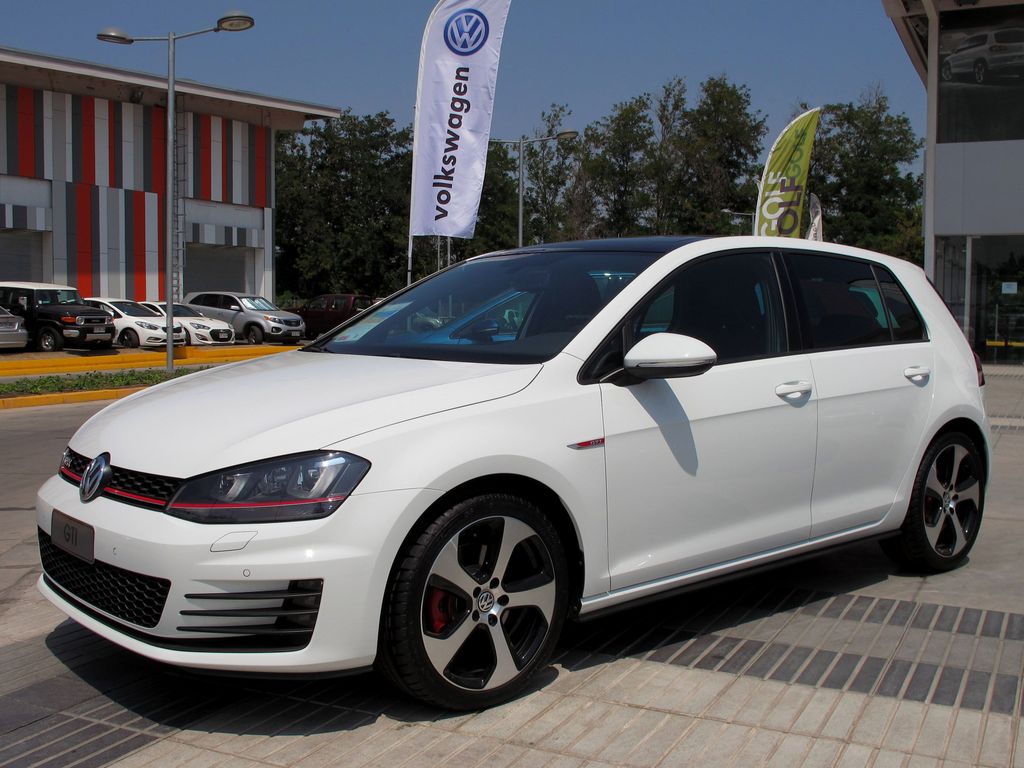
7. **Volkswagen Golf GTI**For decades, the Volkswagen Golf GTI has been the quintessential ‘hot hatch,’ a compact car that defied expectations by delivering thrilling performance and engaging driving dynamics in a practical, unassuming package. Its status as a beloved icon among enthusiasts is well-earned, but this very appeal translates into a significant number of speeding citations, with 11.1 percent of its drivers being ticketed.
The GTI’s magic lies in its balanced blend of power and agility. Equipped with a turbocharged engine, it offers punchy acceleration and responsive power delivery that makes it incredibly fun to drive, both in urban environments and on open highways. Its precise steering and firm suspension contribute to a ‘go-kart’ like handling feel, inviting drivers to tackle corners with enthusiasm and quickly build speed.
This car consistently appears on lists of ticketed vehicles, and for good reason. It offers an intoxicating combination of accessible performance and everyday usability, which often tempts drivers to exploit its capabilities. The GTI is noted to have “36% more speeding tickets than the average,” a testament to its spirited character and the driving habits it tends to inspire among its owners.
Its understated yet sporty aesthetic allows it to blend in, but its underlying performance is anything but subtle. The GTI fosters a strong connection with its driver, encouraging a more dynamic and, at times, more aggressive driving style. This inherent fun factor means that drivers often find themselves effortlessly exceeding speed limits, making the Golf GTI a perennial favorite for those who enjoy pushing boundaries on the road.
Car Model Information: 2025 Honda Civic Sport
Name: Volkswagen Golf
Caption: Volkswagen Golf Mk8
Manufacturer: Volkswagen
Production: 1974–present
Class: Compact car
Predecessor: Volkswagen Beetle
Successor: Volkswagen ID.3
Alt: grey car (hatchback)
Categories: 1980s cars, 1990s cars, 2000s cars, 2010s cars, 2020s cars
Summary: The Volkswagen Golf () is a compact car/small family car (C-segment) produced by the German automotive manufacturer Volkswagen since 1974, marketed worldwide across eight generations, in various body configurations and under various nameplates – including as the Volkswagen Rabbit in the United States and Canada (Mk1 and Mk5), and as the Volkswagen Caribe in Mexico (Mk1).
The original Golf Mk1 was a front-engined, front-wheel drive replacement for the air-cooled, rear-engined, rear-wheel drive Volkswagen Beetle. Historically, the Golf is Volkswagen’s best-selling model and is among the world’s top three best-selling models, with more than 35 million units sold as of 2019.
Initially, most Golfs were hatchbacks, with the three-door version being somewhat more popular than the five-door. Other variants include an estate (Variant, from 1993), convertible (Cabriolet or Cabrio, from 1979), and a Golf-based saloon called the Jetta, Vento (from 1992), or Bora (from 1999). The Golf covers economy to high-performance market segments.
The Golf has won awards, including the World Car of the Year in 2009, with the Mk6 and in 2013 with the Mk7. Along with the Renault Clio and the Vauxhall Astra, the Golf is one of only three cars to have won European Car of the Year twice, in 1992 and 2013. The Golf has made the annual Car and Driver 10Best list multiple times. The Mk7 won the Motor Trend Car of the Year award in 2015, and the Mk1 GTI also won the award in 1985. The Mk4 won for the best-selling car in Europe in 2001.
Get more information about: Volkswagen Golf
Buying a high-performing used car >>>
Brand: Volkswagen Model: Golf GTI
Price: $26,923 Mileage: 1,460 mi.
Read more about: From Billionaires to Royals: 14 Mega-Rich Celebrities Who Opt for Totally Humble Cars (And We’re Obsessed With Why!)
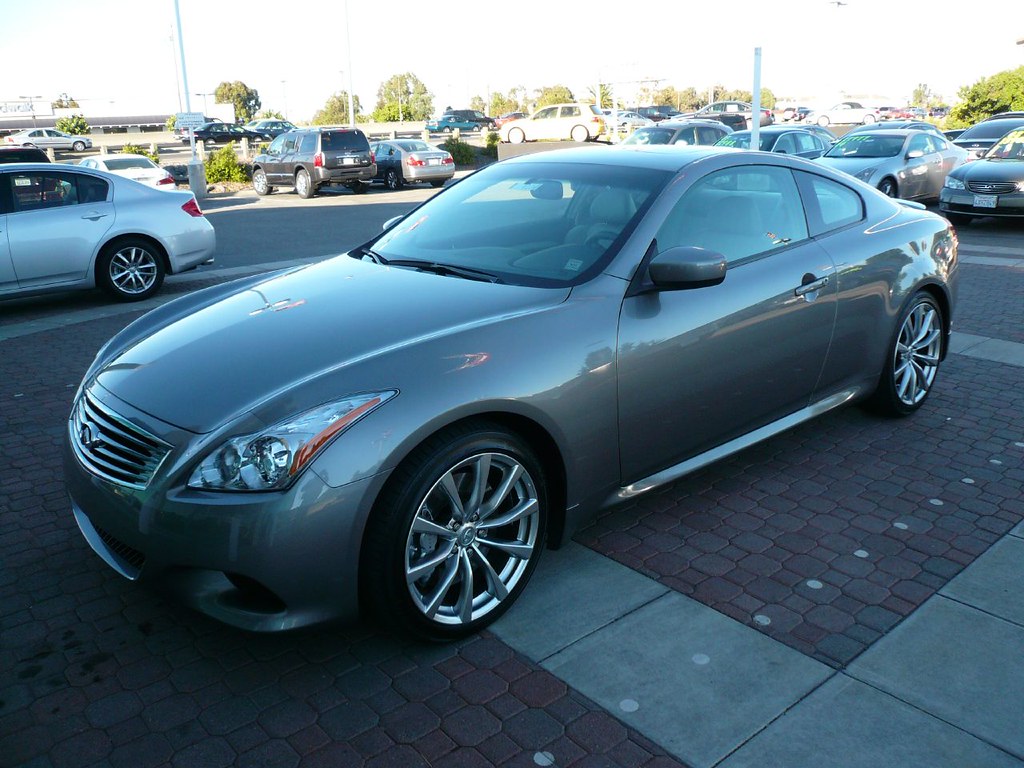
8. **Infiniti G37**The Infiniti G37, a luxury sports car renowned for its blend of performance and sophisticated styling, consistently appears on lists of vehicles frequently cited for speeding. Insurify data specifically highlights the G37, noting that an impressive 10.7 percent of its drivers have received speeding citations. This figure positions it firmly among the top offenders, reinforcing the brand’s overall standing where 8.7 percent of Infiniti owners are ticketed, significantly above the national average of 7.1 percent.
This model serves as a prime example of a performance-oriented vehicle whose intrinsic design and capabilities invite drivers to explore its limits. The G37 combines a potent engine with a sleek, assertive aesthetic, a compelling combination that naturally appeals to those who appreciate both luxury and an exhilarating driving experience. Its sophisticated chassis and responsive powertrain ensure that high speeds are achieved smoothly and almost effortlessly, making it easy to inadvertently exceed limits.
The allure of the G37’s accessible power and refined handling can often lead drivers to push past posted speed limits without fully realizing their velocity. The data suggests a clear correlation between owning such a capable and engaging vehicle and a higher propensity for speeding. For G37 owners, the undeniable thrill of its performance often comes with the increased risk of traffic violations and the subsequent tangible financial impact on their auto insurance premiums.
Car Model Information: 2012 INFINITI G37 Journey
Name: Infiniti G
Caption: 2012 Infiniti G37 (V36, Germany)
Manufacturer: Nissan
Aka: Nissan Primera
Production: 1990–1996,1998–2016
Class: Compact executive car
Layout: Front-engine, front-wheel-drive
Successor: Infiniti Q50
Categories: 2010s cars, All-wheel-drive vehicles, Articles with short description, CS1 errors: bare URL, CS1 errors: missing title
Summary: The Infiniti G Line is a series of compact executive cars manufactured and marketed by Infiniti, a luxury division of Nissan, for the 1991–1996 and 1999–2016 model years — across four generations.
The first two generations of the Infiniti G (P10 and P11) were sedans based on the Nissan Primera. Beginning with its third generation (V35), the Infiniti G have been rebadged versions of the Nissan Skyline line of sedans and coupes that were exported to the United States and Canada. The fourth generation (V36) introduced the hardtop coupe convertible. The Nissan FM platform, used with the third and fourth generations (V35 and V36) of the Infiniti G, also underpins the Nissan 370Z and has shared components with the Infiniti M, Infiniti EX, and Infiniti FX.
Infiniti established a new naming convention beginning with the 2014 model year; all passenger cars are designated by the letter “Q,” while sport-utility model names begin with “QX.” The Infiniti G was to have been replaced by the Infiniti Q50, but the G37 was revived as the Q40 beginning with the 2015 model year.
Get more information about: Infiniti G Line
Buying a high-performing used car >>>
Brand: Infiniti Model: G37
Price: $12,497 Mileage: 112,947 mi.
Read more about: Beyond the Myth: 14 Luxury Coupes That Deliver High-End Thrills Without the ‘Never-Ending Expense’
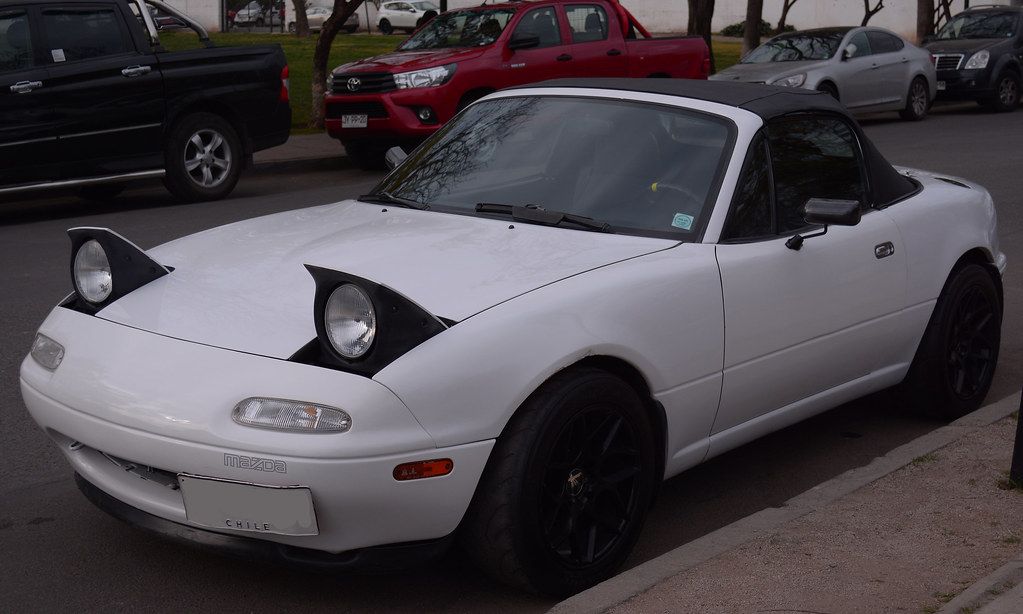
9. **Mazda MX-5 Miata**The Mazda MX-5 Miata, an iconic two-seat roadster, is celebrated worldwide not for prodigious power, but for its pure, unadulterated driving pleasure and exceptional handling. Yet, it surprisingly garners a significant number of speeding tickets, with 9.2 percent of its drivers receiving citations. This statistic powerfully demonstrates that a car doesn’t necessarily need to be a muscle-bound beast to tempt drivers into spirited—and sometimes illegal—speeds.
The Miata’s reputation is built on its exceptional balance, nimble handling, and direct, communicative steering, all of which combine to create an incredibly engaging experience, even at moderate velocities. These inherent characteristics encourage drivers to approach corners with enthusiasm and to fully immerse themselves in the driving process. This deep connection to the road often translates into a desire to explore the car’s agility, which can easily lead to inadvertent speed creep.
Beyond just speeding, the Mazda MX-5 Miata also has a notable and concerning association with reckless driving infractions. Data indicates it leads in this category, with 73 reckless driving incidents per 10,000 vehicles, a statistic nearly five times the national average. This suggests that its widely acclaimed “fun-to-drive” nature might appeal to a specific demographic more inclined towards higher-risk behaviors on the road, contributing to its elevated citation rates.
The Miata’s lightweight construction and responsive engine, while not designed for outright drag-strip performance, nonetheless offer an accessible and thrilling ride. Its unique ability to make mundane drives feel exciting often persuades owners to push boundaries, resulting in a higher likelihood of encountering law enforcement for speed-related offenses.
Car Model Information: 2023 Subaru Forester Limited
Name: Mazda MX-5
Manufacturer: Mazda
Aka: unbulleted indent list
Production: 1989–present
Assembly: Hiroshima
Class: Roadster (car),sports car
Layout: unbulleted indent list
Platform: List of Mazda model codes#Model codes
Categories: 1990s cars, 2000s cars, 2010s cars, 2020s cars, All Wikipedia articles in need of updating
Summary: The Mazda MX-5 is a lightweight two-seat sports car manufactured and marketed by Mazda. In Japan, it is marketed as the Mazda Roadster or, previously, as the Eunos Roadster. In the United States it is sold as the Mazda Miata (), and it was formerly marketed under the same name in Canada. The name miata derives from Old High German for “reward”.
Produced at Mazda’s Hiroshima plant, the MX-5 debuted in 1989 at the Chicago Auto Show. It was created under the design credo Jinba ittai, meaning “unity of horse and rider”. Noted for its small, light, balanced and minimalist design, the MX-5 has often been described as a successor to the 1950s and 1960s Italian and British roadsters, with the Lotus Elan serving as a design benchmark.
Each generation is identified by a two-letter code, beginning with the first generation NA. The second generation NB launched in 1998, followed by the third generation NC in 2005, and the fourth generation ND in 2015.
More than one million MX-5s have been sold, making it the best-selling two-seat convertible sports car in history.
Get more information about: Mazda MX-5
Buying a high-performing used car >>>
Brand: Mazda Model: MX-5 Miata
Price: $32,025 Mileage: 17,380 mi.
Read more about: Before You Buy: The 12 Essential Checks Your Mechanic Insists You Make on Any Used Convertible
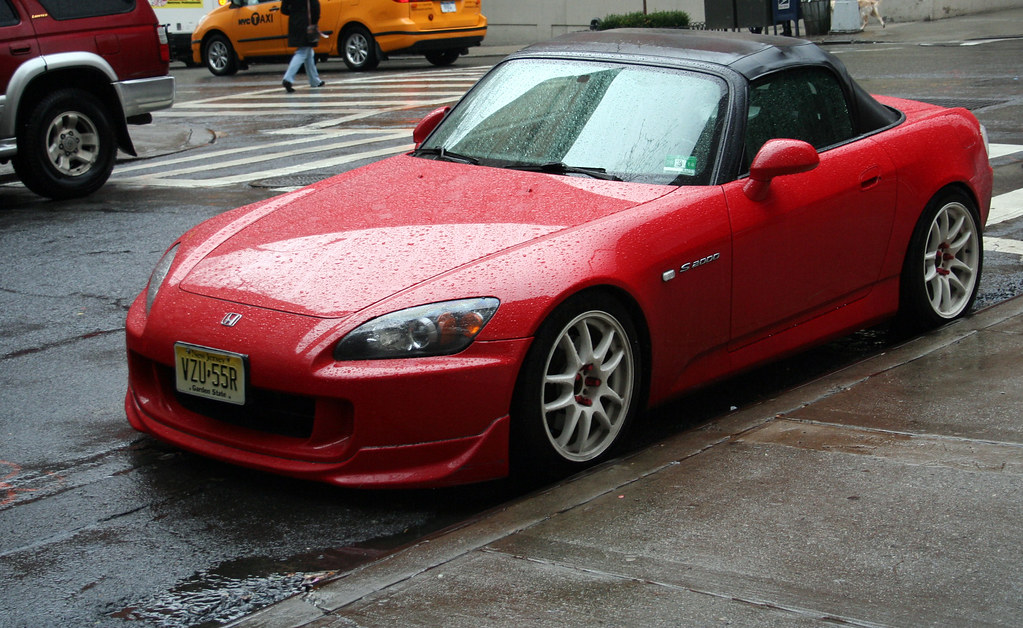
10. **Honda S2000**The Honda S2000, a high-revving, rear-wheel-drive roadster, is another classic enthusiast car that makes the list of frequently ticketed vehicles. With 10.8 percent of its drivers having speeding tickets on record, the S2000 perfectly exemplifies how an engaging, performance-focused machine can inspire drivers to explore its capabilities well beyond legal limits. It’s a testament to Honda’s engineering prowess, but also a cautionary tale for its owners.
This roadster was renowned for its exceptional naturally aspirated engine, which produced impressive horsepower at incredibly high RPMs, delivering a truly visceral and direct driving experience. Its precise manual transmission, communicative chassis, and balanced handling made it an absolute joy to drive aggressively, a trait that the passionate drivers of this model frequently embraced on public roads.
The S2000 was meticulously designed for driving purists, a discerning demographic that deeply appreciates the finer points of automotive engineering and exhilarating performance. This particular demographic, often drawn to pushing limits and seeking thrills, finds the S2000’s thrilling power delivery and unparalleled cornering prowess utterly irresistible. The car’s inherent character strongly encourages a more dynamic and, at times, more aggressive driving style, which statistically correlates with a significantly higher chance of receiving speeding citations.
Its enduring status as a beloved performance icon, coupled with its inherent capabilities to deliver an electrifying drive, makes the S2000 a magnet for drivers who relish a spirited experience. While offering an exhilarating journey, its owners must also contend with the increased statistical likelihood of attracting attention from traffic enforcement and the subsequent implications for their driving record and rising insurance rates.
Car Model Information: 2002 Honda S2000 Base
Name: Honda S2000
Manufacturer: Honda
Production: 1999–2009 (110,673 produced)
Class: Sports car
Layout: Front-engine, rear-wheel-drive layout#Front mid-engine, rear-wheel-drive layout
BodyStyle: Roadster (automobile)
Designer: Shigeru Uehara
Caption: 2005 Honda S2000 (AP2)
Predecessor: Honda S800
Categories: 2000s cars, All articles lacking reliable references, Articles lacking reliable references from May 2024, Articles with short description, CS1: unfit URL
Summary: The Honda S2000 is a front-mid engine open top sports car that was manufactured by Japanese automobile manufacturer Honda, from 1999 until 2009. First shown as a concept car called the SSM at the Tokyo Motor Show in 1995, the production version was launched on April 15, 1999, to celebrate the company’s 50th anniversary. The S2000 is named for its engine displacement of two liters, while “S” stood for “sports” carrying on in the tradition of the S500, S600, and S800 roadsters of the 1960s.
Several revisions were made throughout the car’s production life, including changes to the engine, gearbox, suspension, interior and exterior. Officially two variants exist: the initial launch model was given the chassis code AP1; though cosmetically similar, the facelifted version, known as the AP2 in North America and Japan, incorporated significant changes to the drivetrain and suspension. Production of the S2000 ceased on August 19, 2009.
The Honda S2000 was notable for its exceptional specific power output of about 92 kW (124 hp) per liter, or about two horsepower per cubic inch, the highest of any mass production, naturally aspirated car, until 2010.
Get more information about: Honda S2000
Buying a high-performing used car >>>
Brand: Honda Model: S2000
Price: $35,000 Mileage: 24,000 mi.
Read more about: Why Rappers Are Shifting Gears: The Undeniable Allure of Ultra-Rare Japanese Tuner Cars Over European Supercars
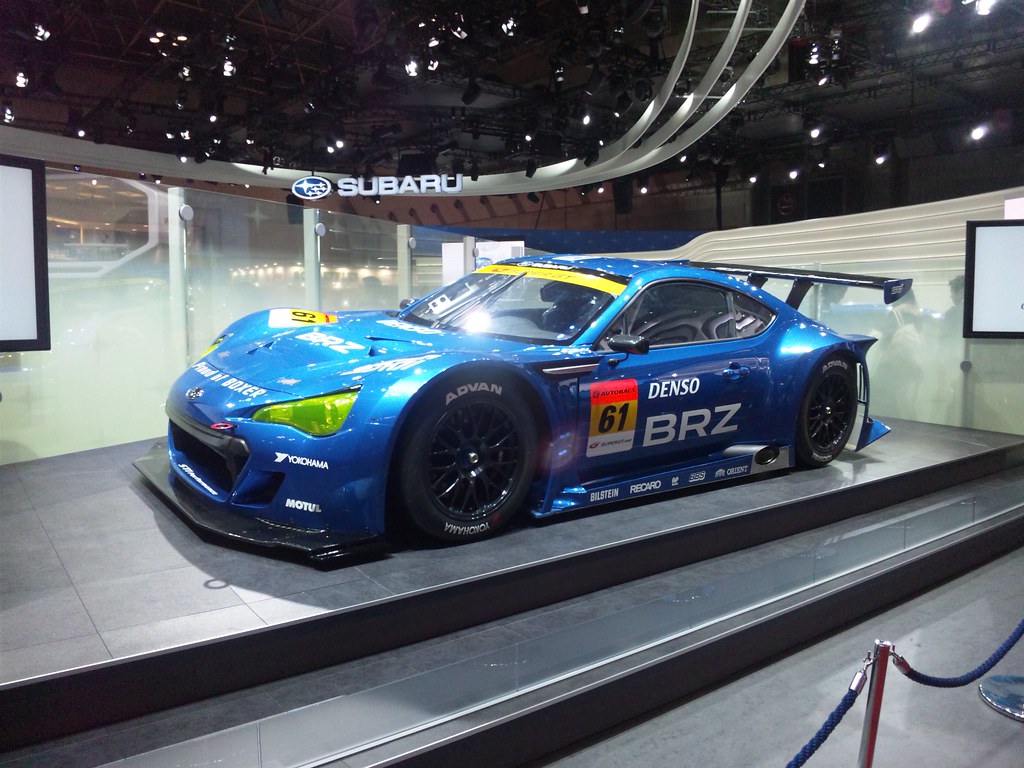
11. **Subaru BRZ**The Subaru BRZ, the fraternal twin to the Scion FR-S (a model we previously examined), shares a very similar DNA rooted in pure driving enjoyment and precise handling rather than sheer, overwhelming power. However, it earns its own distinct, and rather startling, place on the list of ticket-prone vehicles. An Insurify study reveals that the Subaru BRZ actually tops one specific list, with an astonishing 23.9 percent of its drivers having at least one speeding ticket on record, making it one of the most ticketed cars overall.
This exceptionally high percentage is particularly noteworthy, positioning the BRZ as one of the most frequently cited cars across various automotive analyses. Like its sibling, the BRZ was meticulously engineered for optimal balance, a remarkably low center of gravity, and responsive rear-wheel-drive dynamics. These attributes collectively create an incredibly engaging and tactile driving experience that inherently encourages drivers to push the car’s limits in corners and on open roads, making it surprisingly easy to unwittingly exceed speed limits.
The BRZ’s profound appeal lies in its ability to make the driver feel intimately connected to the road, offering precise feedback and agile maneuverability that enhances every drive. This immersive quality, combined with its distinctly sporty aesthetic, attracts a demographic of automotive enthusiasts who are naturally keen to exploit its performance potential. Even without massive horsepower figures, the sheer thrill and engagement of driving the BRZ can lead to a consistently heavier right foot.
Its strong presence on lists of speeding offenders powerfully underlines the fact that driver engagement and dynamic handling can be as much of a factor in speeding incidents as raw engine power. The BRZ serves as a clear illustration of how a vehicle’s character, even if not overtly about straight-line speed, can significantly influence driver behavior and subsequent encounters with law enforcement, leading to its disproportionately high ticket rate.
Car Model Information: 2024 Subaru BRZ Premium
Name: Toyota 86 / Subaru BRZ
Caption: 2022 Toyota GR86 Premium (ZN8)
Manufacturer: Toyota
Aka: unbulleted list
Production: January 2012 – present
ModelYears: 2013–present
Assembly: Ōta, Gunma
Class: Sports car
BodyStyle: fastback,coupé
Layout: Front-engine, rear-wheel-drive
Sp: uk
Categories: 2+2 coupés, 2020s cars, All Wikipedia articles written in British English, All articles with dead external links, All articles with unsourced statements
Summary: The Toyota 86 and the Subaru BRZ are 2+2 sports cars jointly developed by Toyota and Subaru, manufactured at Subaru’s Gunma assembly plant.
The 2+2 fastback coupé has a naturally aspirated boxer engine, front-engined, rear-wheel-drive configuration, 53/47 front/rear weight balance and low centre of gravity; it was inspired by Toyota’s earlier AE86, a small, light, front-engine/rear-drive Corolla variant widely popular for Showroom Stock, Group A, Group N, Rally, Club and drift racing.
For the first-generation model, Toyota marketed the sports car as the 86 in Asia, Australia, North America (from August 2016), South Africa, and South America; as the Toyota GT86 in Europe; as the 86 and GT86 in New Zealand; as the Toyota FT86 in Brunei, Nicaragua and Jamaica and as the Scion FR-S (2012–2016) in the United States and Canada.
The second-generation model is marketed by Toyota as the GR86 as part of the Gazoo Racing family.
Get more information about: Toyota 86
Buying a high-performing used car >>>
Brand: Subaru Model: BRZ
Price: $31,500 Mileage: 3,195 mi.
Read more about: For Snow Belt Residents: A Deep Dive into the 10 Worst Winter-Ready Vehicles on the Market Today
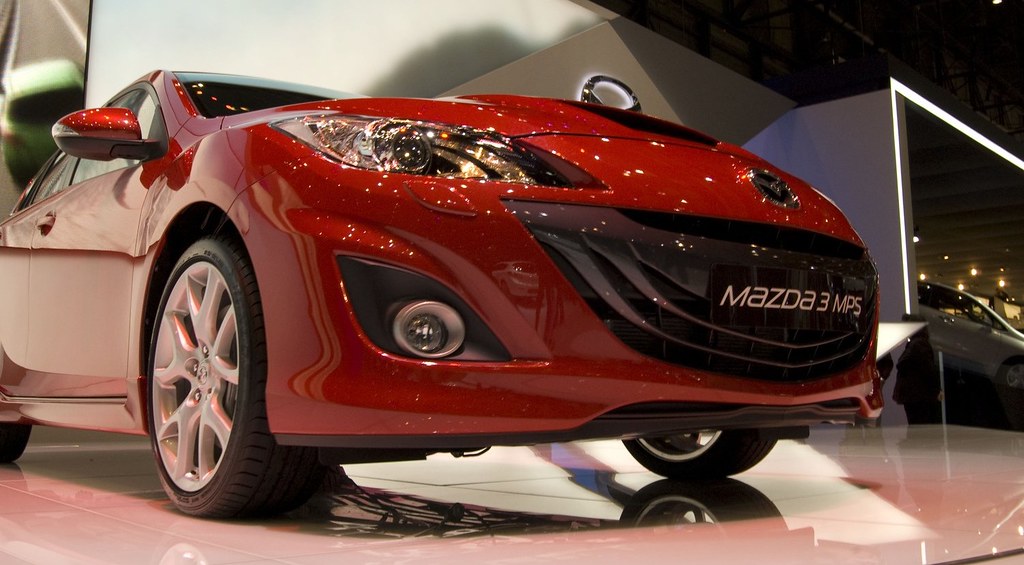
12. **Mazda 3**Steering slightly away from dedicated sports coupes, the Mazda 3, a popular and widely accessible compact car, surprisingly also finds itself listed among vehicles with a higher propensity for speeding tickets. Data robustly indicates that the Mazda 3 accumulates “42% more speeding tickets than the average,” a significant statistic that positions it firmly within the ranks of ticket-prone models despite its more mainstream appeal and practical design. This challenges common assumptions about speeding vehicles.
The Mazda 3, renowned for its brand’s distinctive ‘zoom-zoom’ philosophy, consistently injects a dose of genuine driving enjoyment and spirited dynamics into the often-staid compact car segment. It offers nimble handling, responsive steering, and an overall sense of agility that makes it feel considerably more engaging and fun to drive than many of its direct competitors. This spirited character, while appealing to everyday drivers, can also subtly and unintentionally encourage a faster driving style.
Often considered a more affordable and practical option, the Mazda 3 also benefits from being widely accessible, meaning there are simply more of them on the road compared to niche performance vehicles. This potent combination of widespread availability, an inherently engaging driving experience, and a retail price point often lower than the national average could collectively contribute to its notably higher incidence of speeding tickets. It powerfully illustrates that it’s not exclusively expensive, flashy sports cars that tempt drivers to speed; more practical, fun-to-drive vehicles play a significant role as well.
Its inclusion on such prominent lists challenges the prevalent assumption that only high-performance luxury vehicles are associated with speeding. The Mazda 3 demonstrates that a car’s inherent dynamism and spirited feel, even when packaged within a practical and economical framework, can significantly influence driver behavior and the likelihood of receiving citations, highlighting the diverse range of vehicles that attract speeding infractions.
Car Model Information: 2020 Mazda CX-3 Sport
Name: Mazda3
Manufacturer: Mazda
Aka: Mazda Axela (Japan and China, 2003–2019)
Production: 2003–present
Class: Compact car
BodyStyle: Sedan (automobile),hatchback
Layout: Front-engine, front-wheel-drive layout,Front-engine, four-wheel-drive layout
Predecessor: Mazda Familia
Categories: 2010s cars, 2020s cars, All Wikipedia articles written in British English, All articles needing rewrite, All articles with dead external links
Summary: The Mazda3 (known as the Mazda Axela (Japanese: マツダ・アクセラ, Hepburn: Matsuda Akusera) in China and Japan (first three generations until 2019), a combination of “accelerate” and “excellent”) is a compact car manufactured by Mazda, available as a 5-door hatchback and 4-door sedan across all generations. It was first introduced in 2003 as a 2004 model, replacing the Familia/323/Protegé in the C-segment.
The second-generation Mazda3 for the 2009 model year was unveiled in late 2008, with the sedan premiering at the Los Angeles Auto Show and the hatchback at the Bologna Motor Show. For the 2012 model year, Mazda began offering the Mazda3 with their newly developed Skyactiv technology, including a more rigid body, a new direct-injection engine, and a new 6-speed transmission.
The third generation was introduced in mid-2013 as a 2014 model year. The third-generation model is the first Mazda3 to adopt the “Kodo” design language and a more complete Skyactiv range of technologies and the first to be made by Mazda independently.
The fourth-generation Mazda3 for the 2019 model year was unveiled in November 2018 at the Los Angeles Auto Show. For the 2019 model, the all-new Mazda3 is equipped with the updated Skyactiv technologies, including a spark-controlled compression ignition engine marketed as the Skyactiv-X.
A performance-oriented version of the Mazda3 was marketed until 2013 as the Mazdaspeed3 in North America, Mazdaspeed Axela in Japan, and the Mazda3 MPS in Europe and Australia.
The Mazda3 became one of Mazda’s fastest-selling vehicles, with cumulative sales in January 2019 of over 6 million units.
Get more information about: Mazda3
Buying a high-performing used car >>>
Brand: MAZDA Model: 3
Price: $18,590 Mileage: 37,854 mi.
Read more about: Steer Clear: 9 Hybrid Models That Leave Owners Drowning in Regret

13. **Chevrolet Cruze Limited**Rounding out our examination of individual models, the Chevrolet Cruze Limited, a compact sedan typically not associated with high-performance driving or aggressive aesthetics, presents another intriguing case study. It is notably mentioned among “practical vehicles [that] also show concerning patterns” with high rates of speeding tickets, despite its unequivocally “modest horsepower ratings.” This inclusion powerfully underscores a vital point: the phenomenon of speeding is not exclusive to overtly sporty or powerful cars.
The Cruze Limited, while offering a comfortable, efficient, and reliable commuting experience, was never explicitly marketed as a performance-oriented vehicle. Its unexpected presence on lists of ticket-prone vehicles strongly suggests that factors beyond raw speed—such as specific driver demographics, repetitive daily commuting patterns, or perhaps a feeling of complacency due to its unassuming nature—might significantly contribute to its drivers exceeding posted speed limits. This adds a layer of complexity to the discussion.
This car’s widespread popularity as a reliable and affordable daily driver means it is frequently on the road, often navigating diverse traffic conditions and varying speed zones. For many drivers, the Cruze Limited serves primarily as a dependable workhorse, and the consistent, perhaps monotonous, nature of daily commutes can sometimes lead to a relaxed approach to speed limits, even in a car not specifically designed for aggressive driving. This behavioral aspect is critical.
Therefore, the appearance of models like the Chevrolet Cruze Limited on these lists broadens our understanding of the multifaceted factors contributing to speeding violations. It serves as a potent reminder that regardless of a vehicle’s inherent capabilities, class, or public perception, driver awareness and unwavering adherence to speed laws remain absolutely paramount. This highlights the multifaceted nature of speeding, extending far beyond just the allure of high-performance machines.
**The Role of Driver Behavior in Speeding Tickets**
While the intrinsic characteristics of a car model undeniably play a part in influencing speeding tendencies, it’s crucial to acknowledge that individual driver behavior remains the primary catalyst behind the issuance of speeding tickets. Insights from various studies consistently point to several key aspects of driver conduct that contribute significantly to these infractions. Aggressive driving and inherent risk-taking are particularly common among owners of high-performance vehicles, where the powerful temptation to exploit the car’s capabilities often overrides cautious judgment and adherence to rules.
Risk-taking is a major contributing factor, with drivers of high-performance cars frequently exhibiting more assertive and less conservative driving styles. This can manifest not only as speeding but also as other dangerous behaviors like aggressive weaving through traffic, running red lights or stop signs, or following too closely, all of which substantially elevate the risk of accidents. For instance, the Hyundai Genesis Coupe, while already a “high-ticket offender” for speeding, also leads the charge with 67 reckless driving infractions per 10,000 vehicles in one study, underscoring this broader pattern of risky behavior behind the wheel.
Furthermore, peer influence, especially prevalent among younger drivers, can exert pressure on individuals to drive faster or more aggressively, particularly when driving in groups or attempting to impress others. Awareness also plays a critical role; drivers, especially when behind the wheel of powerful or exceptionally smooth-riding vehicles, may frequently underestimate the actual speed at which they are traveling, inadvertently exceeding posted limits. The smooth power delivery and remarkable stability at speed offered by many of these models can create a deceptive sense of control, effectively masking the true velocities achieved.
Ultimately, the individual behind the wheel makes the conscious decision to exceed the speed limit or engage in reckless driving. While a car’s design and performance might tempt, it does not force such actions. Understanding these deep-seated behavioral elements is absolutely essential for developing effective strategies to promote safer driving habits and significantly reduce the incidence of speeding violations across the entire spectrum of vehicle types.
**The Impact of Speeding Tickets on Insurance Rates**
Receiving a speeding ticket carries consequences far beyond the immediate monetary fine; it can have significant and long-lasting financial implications, particularly for auto insurance premiums. This is a critical aspect for every driver to thoroughly understand, as the ripple effect of even a single citation can extend for several years. Insurify data clearly reveals that speeding tickets can lead to higher insurance rates for up to five years after the violation, with some sources specifically indicating a duration of three to five years.
On average, drivers with speeding tickets can anticipate their insurance premiums to rise by approximately 20 percent. This percentage increase can translate into hundreds of additional dollars annually, effectively making the “cost” of a speeding ticket much higher than just the initial fine. For instance, if the average annual comprehensive coverage is around $2000, a 20 percent hike means an extra $400 per year. Over a period of several years, this can amount to a substantial, often unexpected, sum that significantly impacts a household budget.
Insurance companies utilize these statistics because they inherently view drivers with speeding violations as a demonstrably higher risk. Their extensive actuarial data consistently shows a strong correlation between past speeding incidents and a higher likelihood of future accidents or claims. Therefore, the premium increase is a direct financial reflection of this elevated risk profile. Interestingly, certain car models, like the BMW i3, despite its environmentally conscious electric and practical image, can lead to significantly higher insurance costs due to their disproportionately high ticket rates, as observed in various studies.
The financial repercussions underscore the profound importance of responsible driving. Avoiding speeding tickets not only helps keep money in your pocket but also maintains a clean driving record, which is a key factor in securing the most favorable and competitive insurance rates. It’s a compelling reminder that embracing safe driving habits offers both crucial personal safety benefits and tangible, long-term financial rewards.
**Regional Variations: Where Are Speeding Tickets Most Common?**
The likelihood of receiving a speeding ticket is notably not uniform across the United States; it can vary significantly based on geographic location, the enforcement priorities of local law enforcement agencies, and specific state-level laws and regulations. Understanding these pronounced regional variations can offer drivers valuable insights into areas where vigilance regarding speed limits and driving behavior is particularly crucial. It’s a compelling example of how external, environmental factors can powerfully influence the “ticket-proneness” dynamic, extending beyond just the specific car and the individual driver.
Urban areas, such as major metropolitan cities like Los Angeles and New York, often experience higher ticket rates. This phenomenon is primarily due to several interconnected factors: denser traffic conditions, a more frequent and visible presence of law enforcement personnel, and often stricter enforcement practices implemented in response to higher traffic volumes and the greater potential for accidents. Speed limits in urban environments are generally lower and more consistently monitored, making it easier for drivers to inadvertently exceed them.
Conversely, while often perceived as less policed or more lenient, rural roads can also exhibit surprisingly high ticket rates. This is particularly true on open highways where drivers might feel less constrained by traffic and more tempted to ignore posted speed limits, often assuming a lower chance of detection. However, law enforcement in these areas frequently utilizes advanced radar technology to effectively catch speeders who drastically exceed limits on long, straight stretches, where high speeds are easily achieved.
State laws play an absolutely pivotal role, with some states having notoriously stricter speeding laws and more aggressive, systematic enforcement policies than others. These legislative differences, combined with variations in police staffing, resource allocation, and departmental directives, significantly contribute to the pronounced disparities in ticketing rates observed across the nation. Therefore, awareness of these local nuances and legal frameworks is paramount for any driver traveling across different regions.
**Background: The Evolution of Speeding Laws and Enforcement**
The concept of regulating vehicle speed is far from a modern invention, with speeding laws having a rich and continuously evolving history that directly mirrors the development of automotive technology and shifting societal priorities. From rudimentary beginnings to today’s sophisticated enforcement methods, the legal framework governing how fast we can drive has adapted considerably over time. It’s a testament to the ongoing and complex effort to balance the benefits of mobility with the critical imperative of public safety.
Early in the 20th century, as automobiles gradually became more common and accessible, speed limits were first formally introduced. This was primarily a vital measure to protect pedestrians and other road users in an era when cars were novel, often unreliable, and capable of what were then considered frighteningly high speeds compared to traditional horse-drawn carriages. The very first speeding infraction in the United States, famously cited in 1899 to a New York City taxicab driver named Jacob German, vividly illustrates this initial focus; he was arrested for driving a fully-electric vehicle at a ‘reckless and dangerous speed’ of 12 miles per hour when the posted speed limit for straight-line driving was only eight miles per hour.
A significant shift in national policy occurred in the 1970s when the national speed limit was uniformly set at 55 mph across the country. This profound change was primarily driven not by immediate safety concerns, but by the pressing need to conserve fuel during the national oil crisis, demonstrating how broader external geopolitical events and economic pressures can profoundly influence traffic regulations. This uniform limit eventually gave way to individual states regaining the authority to set their own speed limits, leading to the varied landscape we see today.
In the present day, speed limits vary widely across different jurisdictions and road types, reflecting a more nuanced and context-specific approach to traffic management. Crucially, enforcement has become far more sophisticated and effective, largely thanks to continuous technological advancements. Modern law enforcement tools, such as high-performance handheld radar devices like the Kustom Signals Falcon HR and Talon directional RADAR, now employ advanced Digital Signal Processing (DSP) technology. These cutting-edge devices can accurately track multiple targets, reliably detect the fastest vehicle even in complex, high-traffic environments, and offer enhanced stationary modes, making it significantly easier for officers to precisely identify and apprehend speeding vehicles. This continuous evolution in technology underscores the persistent and dynamic challenge of speed enforcement in a world of ever-faster and more capable cars.
**Conclusion**
As we conclude this deep dive into the fascinating, and at times surprising, world of speeding tickets, it becomes abundantly clear that this phenomenon is a complex interplay between a vehicle’s inherent design, its performance capabilities, and, most critically, the conscious choices made by the driver. Whether it’s the thrilling acceleration of an Audi S4, the nimble handling of a Mazda MX-5 Miata, or even the subtle temptations presented by a practical Mazda 3, every car has the potential to influence our driving habits, for better or for worse.
Car Model Information: 2025 Honda Civic Sport
Name: Chevrolet Cruze
Caption: 2017 Chevrolet Cruze LT sedan
Manufacturer: General Motors
Aka: unbulleted list
Production: unbulleted list
ModelYears: 2011–2019 (North America),2026 (Middle East)
Class: Compact car
Layout: Front-engine, front-wheel drive
Predecessor: unbulleted list
Successor: unbulleted list
Categories: 2010s cars, 2020s cars, ANCAP small family cars, All articles containing potentially dated statements, All articles with dead external links
Summary: The Chevrolet Cruze is a compact car produced by General Motors from 2008 through 2023. It was designated as a globally developed, designed, and manufactured four-door compact sedan, complemented by a five-door hatchback body variant from 2011, and a station wagon in 2012. The Cruze replaced several compact models, including the Chevrolet Optra which was sold internationally under various names, the Chevrolet Cobalt sold exclusively in North America, and the Australasian-market Holden Astra.
The Cruze was released in 2008 for the South Korean market as the Daewoo Lacetti Premiere prior to the adoption of its international name in 2011, when the Daewoo brand was discontinued. In Australasia, the model was sold between 2009 and 2016 as the Holden Cruze. In 2016, the Cruze sedan was restyled and renamed for the Australasian market as the Holden Astra Sedan, as a sedan complement to the Holden Astra family.
Due to the market shift towards SUVs and decreasing sales, the Cruze has been gradually phased out. Production of the Cruze in South Korea ended in 2018 as part of restructuring of GM Korea, which in turn ceased supply of the Holden Astra Sedan to Australasia. In the United States and Mexico, production ended in 2019, while production in China ended in 2020. Production continued in Argentina until 2023. It was replaced by the Monza in China, which is known as the Cavalier in Mexico.
In 2025, the Cruze was revived as a rebadged Chevrolet Monza for the Middle East.
Previously, the nameplate has been used for a version of a subcompact hatchback car produced under a joint venture with Suzuki from 2001 to 2007, and was based on the Suzuki Ignis.
Get more information about: Chevrolet Cruze
Buying a high-performing used car >>>
Brand: Chevrolet Model: Cruze Limited
Price: $26,923 Mileage: 1,460 mi.
Read more about: Buyer Beware: 15 Sedans That Won’t Make it to 80,000 Miles Without Costly Repairs
But ultimately, the power to drive responsibly rests squarely with each individual. The robust statistics we’ve explored, from soaring insurance premiums to varying regional enforcement practices and the historical evolution of traffic laws, serve as stark and unequivocal reminders that the consequences of speeding extend far beyond a momentary thrill. They profoundly impact our finances, our personal safety, and, crucially, the safety of everyone else sharing the road. So, as you embark on your next journey, remember to stay acutely aware of your speed, respect the posted limits, and genuinely enjoy the ride responsibly. It’s not just about reaching the destination; it’s about making every journey a safe, smart, and mindful one. Drive safe out there, and remember: it’s not just about the destination, but the journey too! 🚗💨



